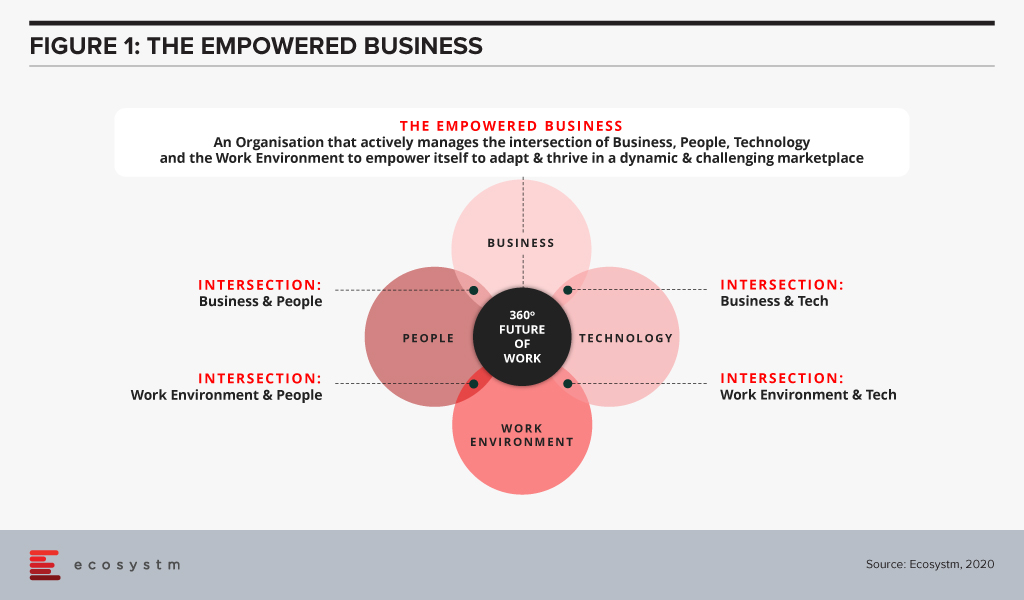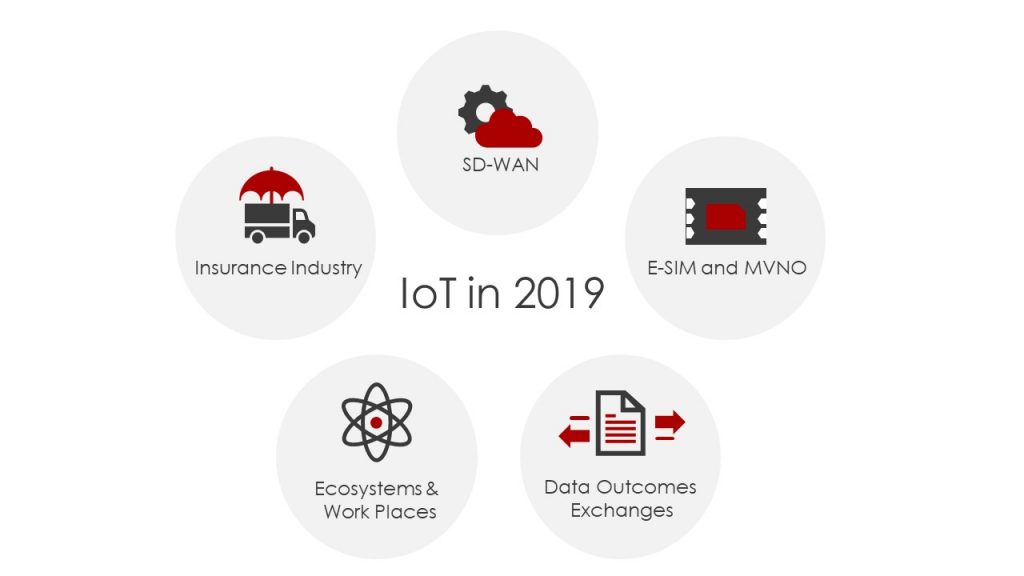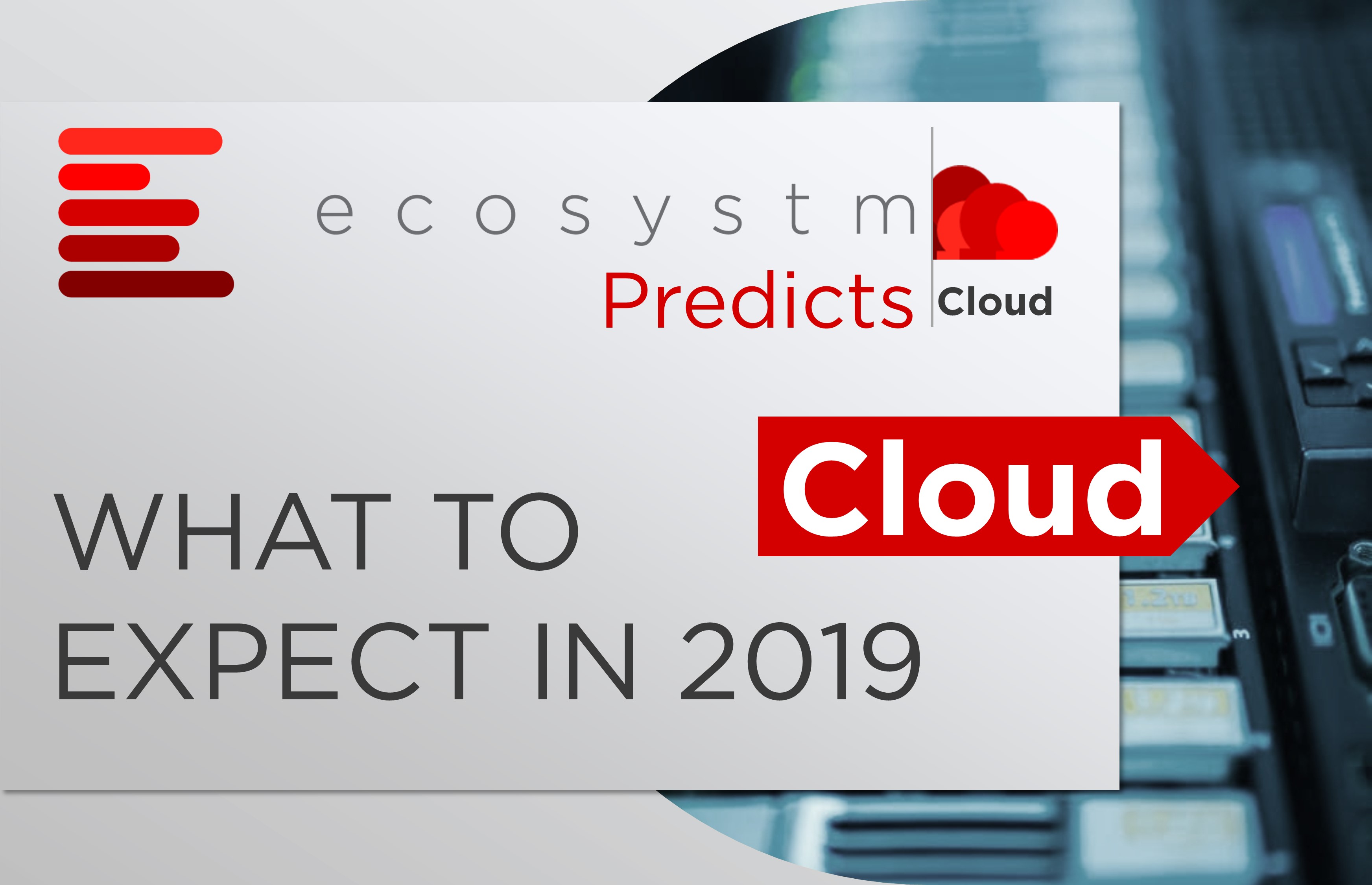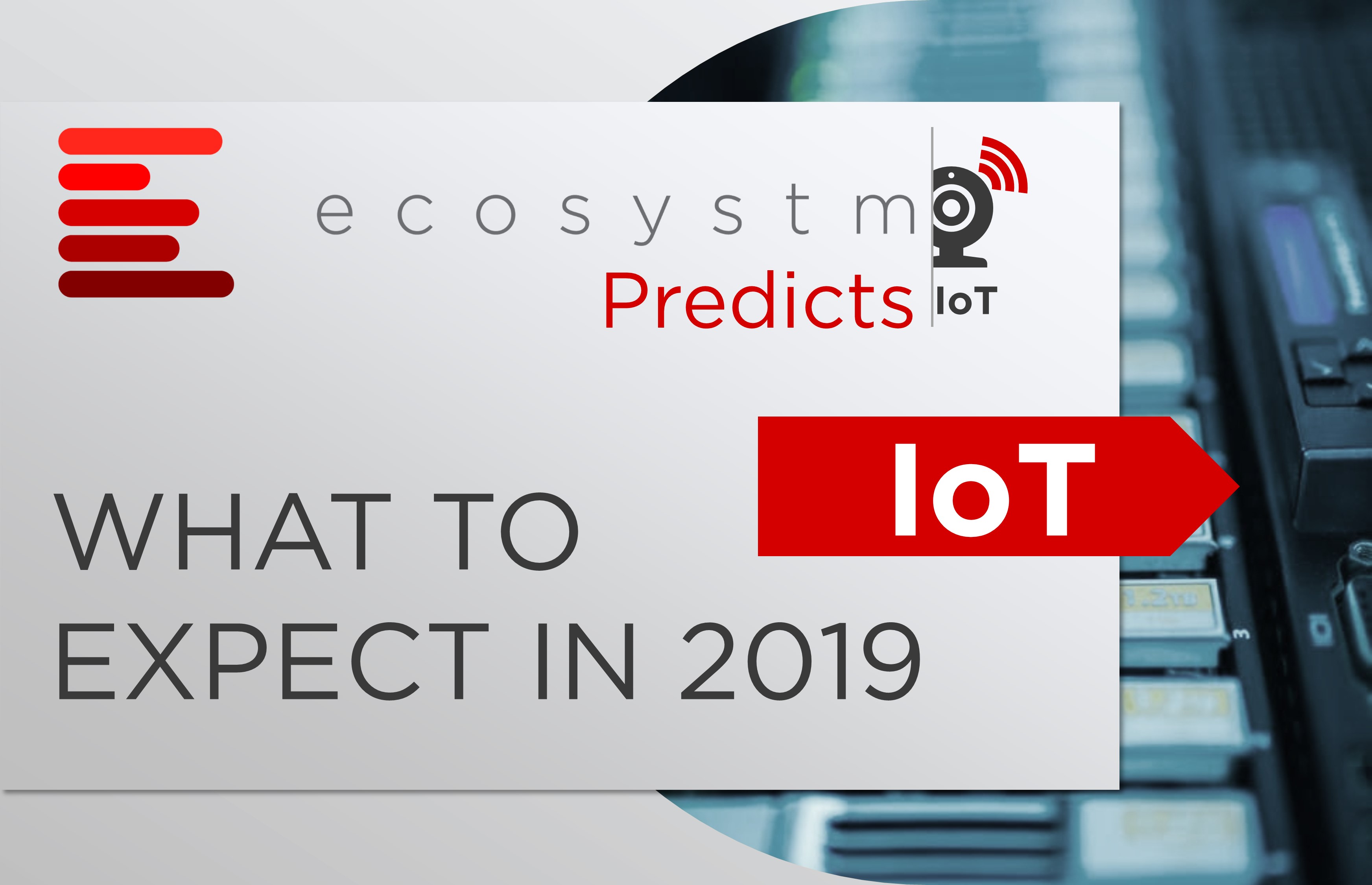2020 has been a watershed year for Future of Work policies and technologies. Organisations are still evaluating their workplace strategies and 2021 is likely to see experiments in work models – every organisation will choose the model that works for their nature of work and their organisational culture. Against this backdrop of disruption and change, Ecosystm’s 360o Future of Work team – Audrey William, Mike Zamora, Ravi Bhogaraju and Tim Sheedy – present the top 5 Ecosystm predictions for the Future of Work in 2021.
This is a summary of the predictions, the full report (including the implications) is available to download for free on the Ecosystm platform here.
The Top 5 Future of Work Trends For 2021
- Human-centricity Will be Front and Centre of Organisational Priorities
2020 saw immense humanitarian disruption. Enabling remote work was a key component of business continuity. Both organisations and their employees have a better understanding now of the implications of remote working and how it can be made to work. They are also aware of the challenges of remote working. Monitoring productivity, maintaining the right work-life balance and ensuring employee emotional well-being have been challenging. Despite the challenges, hybrid/blended working is definitely here to stay. Employees will expect more options on the location of their work, often choosing to work where they are most productive.
All decisions related to the organisation, filtered through the lens of human-centricity, will drive better employee engagement – and engaged employees provide better customer experience. Organisations that will operationalise this at scale and across cultures will emerge as success stories.
- Technology Will Bond with Facilities and Operations – Connecting with HR Will be a Challenge
There has to be an alignment between the Business, People, Work Environment and Technology to make an organisation truly empowered to handle sudden pivots that will be required in 2021 as well (Figure 1).

This will require cross-departmental coordination and synergy. Tech teams have traditionally driven the Digital Workplace strategy; now they will have to work closely with Operations and Facilities Management teams on “Smart and Safe Office” strategies. That may not be the real challenge given that there are overlaps between these three teams – they have a shared language and similar KPIs. The real challenge will be the need for Tech teams and HR to work more closely to improve the overall employee experience, including a focus on employee productivity and wellness. Human-centricity makes the role of HR even more important – IT will find it challenging to find common grounds as there have traditionally been few shared KPIs between these two departments.
- Office Spaces Will Become Truly Digital
The hybrid/blended workplace model means that the physical workplace is not disappearing soon. Even as the model evolves for each organisation, what becomes clear is that employee expectations have changed drastically in the last year, and the traditional employee experience expectations of Salary, Recognition, and Job Satisfaction may not be enough. Employees will now expect flexibility, social cohesion, and effective communication. If they are to return to the physical office, they will expect the same benefits as working from home.
This will drive the adoption of digital tech to ensure the office space is safer, more effective and a productive environment for the employees and the business. Two key areas of focus will be on seamless access to information and employee control over work environment.
- Providers Will Deepen Digital Workplace Offerings, but the Market Will Not Consolidate
Key tech providers in the digital workspace space (such as Microsoft, Google, Zoom, Cisco, AWS and so on) will broaden their capabilities and make it easier to procure and use solutions. It will no longer be a “tool-centric” approach (chat, video, document sharing, online meetings, whiteboards and so on) – it will become a platform play. Information workers will be able to choose the approach that best fits the problem they are trying to resolve, without being limited by the capabilities of the tool. E.g. documents will be sharable and editable within chats; whiteboards will be integrated into all other communication services and so on.
Tech providers will deepen and strengthen their capabilities organically and acquisitions will mostly be about buying market share, customers and not the technology.
- Industry-centric Digital Workplace Services Will Emerge and Witness Rapid Growth
The Services industry has been leading in the adoption of digital workplaces – but blue-collar roles and front-line employees will also start benefiting from these technologies. In 2021, new digital workplace capabilities will extend beyond the employee base to systems that drive better connectivity and communication with customers. This will open the market up for smaller, niche players (and this may well run counter to the previous trend). Tech teams will focus on employees and a platform-based approach to collaboration, while Customer teams and others will implement tools and platforms to better communicate outside of the business. The next few years will bring the traditional “employee-centric” collaboration players into direct competition with the “customer-centric” ones. Those that play across both today (such as Google) will be better positioned to win the enterprise-wide “Future of Work” style deals.

The growth in public cloud platforms and applications is just starting to hit its strides. In 2019, more companies will spend more money moving more of their applications and processes across to the public cloud. Many cloud markets will move into hypergrowth. Cloud computing adoption is moving beyond the fast adopters to the mass market – so dynamics are changing. Our top five predictions for 2019 are:
Many SaaS Applications Will Move into Hypergrowth
If you think that the software-as-a-service (SaaS) market is a mature one, think again. Yes, cloud-based solution providers such as Salesforce have a lot of customers for their CRM and Marketing platforms, as do vendors such as Microsoft and Google for their collaboration suites – but even the cloud-based CRM market is set to explode in 2019 as the number of companies looking to deploy SaaS-based applications nearly doubles. Most companies across the globe still have most of their applications hosted in their own or partner data centres. The opportunity in the SaaS market is still huge – and will be that way for years to come. SaaS-based BI & Analytics will move from 10% of companies using it today to 21% in 2019, marketing applications from 10% to 24% and UC&C from 11% to 21%.
Security Will Return to Being the Number One Barrier to Public Cloud Adoption
As the cloud providers start to penetrate the “mass market” – involving companies that are not fast adopters and do not push the envelope and procrastinate over big technology or business decisions – expect the question of security to come up again. And again. And again… When public cloud first entered the business consciousness 10-12 years ago, security was the number one reason why companies did not embrace it. It slipped down the list over the past few years as more leading, fast moving businesses overcame this objection – but with more companies looking to implement public cloud services, more of the objectors are coming back out of the woodwork to make security a number one blocker again.
Partners Will Come Back into Fashion for Cloud Deployments
The very first companies to move to public cloud platforms or software typically used a partner – they were going where few had been before, and they relied on the expertise of external providers to help them make the move. But the past five or so years have seen many businesses eschew partners in the move to the public cloud – as they looked to learn the skills that they require both to make the transition and for the ongoing management and automation of the cloud environment, themselves. But as the market for public cloud software and platforms moves into hypergrowth, more companies will look to partners to help them with the transition to cloud – and more importantly – the ongoing management of their cloud environments.
Cloud Ecosystems Will Accelerate the Adoption of Artificial Intelligence Solutions
Today nearly every software provider is looking at the opportunity to make their software smart – to have the software learn, predict, personalise, see, sense or converse. Some have started by building their own AI tools – but these companies are learning that these tools are more lines of code that need to be maintained, secured, evolved and improved. Smart ISVs are building their AI capabilities using the tools that already exist on the public cloud platforms. In fact, this move is seeing more ISVs move away from hosting the cloud version of their software from their own cloud platform to one of the big five or six public cloud platforms. As more ISVs make their software intelligent, more customers will be able to adopt AI solutions that are embedded in their existing software tools and platforms.
Companies Move to the Cloud for the Features and Functions, but Will Stay for the User Experience
While companies might move to the public cloud because of the features, functions, technical capabilities or in-country data centres, what keeps customers on cloud platforms is the user experience. Some of the global public cloud platforms and software providers have not created the best user experience – yes, the technologists and developers might love them, but cloud usage is quickly moving beyond the technology team. AI tools need to be used by data scientists and product managers, while automation tools will be used by Customer Experience professionals. Business analysts want to be able to create or vary processes without the intervention of the IT team or cloud management partner. User experience will be key to increasing cloud usage within existing customers.
For access to the full report, please follow this link.
Historically I had been responsible for drafting predictions that were often discrete and almost independent of each other. However, in the last 12 months I’ve become a strong proponent of observing market trends and joining their collective impact into bigger and broader industry predictions. I feel that this approach has more value to the ecosystem, that takes to enable the Internet of Things.
With this as a backdrop, my five independent predictions are aimed at vendors and customers to be constantly reevaluating their position in the value chain with adjacent technologies and markets. The predictions for 2019 are:
- Flexibility Will Outweigh Performance: eSIM and MVNOs Will Create More IoT Services Value than 5G Providers.
- The Intelligent Edge and SD-WAN Will Tackle the Distributed Network Performance and Management Issues.
- IoT Ecosystems Will Evolve into Automated, Intelligent and Interactive Workspaces.
- IoT Public and Private Market Exchanges Will Emerge Enabling AI-Based Startups to Create Business Outcome Services.
- The Insurance Industry Will Become the Leading Advocate for IoT Innovation Services Forcing ICT Companies to Play Along.

At the base of the predictions pyramid, or a starting point in an IoT ecosystem where the customer or their data is in the center, is connectivity. The deafening drum beat of 5G can be heard. By all accounts every IoT application should be deployed onto a 5G network in 2019. However, while 5G and several key IoT applications are a great fit for each other (video is a perfect example), customers are already testing alternatives which are both good enough from a network performance and business case angles. To that end, 2019 will be a year where e-SIMs delivered by Mobile Virtual Network Operators (MVNOs) will be the defacto on-ramp for many ICT organizations. Layered upon that will be the opportunity to run unlicensed spectrum such as LoRa to greatly simplify the complex issue of connectivity, security and scalability.
As more customers scale up their IoT deployments in 2019, distributed architectures become more important as edge computing takes on the new ‘branch office’ layer. To respond to the new network edge, distributed networks become easier to manage with the broader deployment and acceptance of software-defined wireless access networks (SD-WANs). SD-WANs will become the stepping stones for carriers, network equipment vendors, IT and industrial operations to deliver application management performance, and security.
In 2019 the discussion of who has the best IoT platform will become irrelevant, as customers who own the IoT data will be asking who has the best ecosystem. IoT data will quickly shift business processes from being stand-alone engagements between suppliers and customers to one of a complete end-to-end solution. Industries such as manufacturing, retail, smart buildings, smart cities, transportation and logistics will all come alive with disruptive business models and services within the ecosystem. This shift will generate a ‘new software’ platform that isn’t owned by a traditional IT software company, but by someone who owns the business relationship with the customer and who can aggregate all of the players onto the platform.
These automated, intelligent and interactive workspaces will become a potential battleground between traditional services companies and these new nimble aggregators using SaaS-based platforms to deliver better customer experiences. By late 2019, these ecosystems will become the foundation layer for IoT exchanges whereby business knowledge gained from IoT analytics will be traded or bartered within private or public exchanges. Here, technology such as blockchain will have a very relevant place within IoT solutions.
Finally, in 2019 the major insurance companies will rise to become some of the most influential players in making vendors and customers adopt IoT solutions. Knowing that IoT sensors can give detailed information on every aspect of product and customer behavior, insurance companies will exercise pressure on everyone who wants to play within an IoT ecosystem. Anyone who wants or needs some level of product warranty, liability, replacement coverage, service and user behavior insurance will be impacted by IoT-fed actuary tables. Insurance underwriters will ask, seek or have the ability to combine IoT data with Artificial Intelligence (AI), and Machine Learning (ML) integrating the outcomes with Augmented Reality (AR), Digital Twins and 3D-Printing for robotics, drones, autos (or all levels of transportation) across every industry. The influence and impact will be significant and to every intersection of technology and human interface as the high demand for data drives IoT sensor deployment from the base of the network infrastructure all the way to the ecosystem and exchanges.
For access to the full report, please follow this link.




